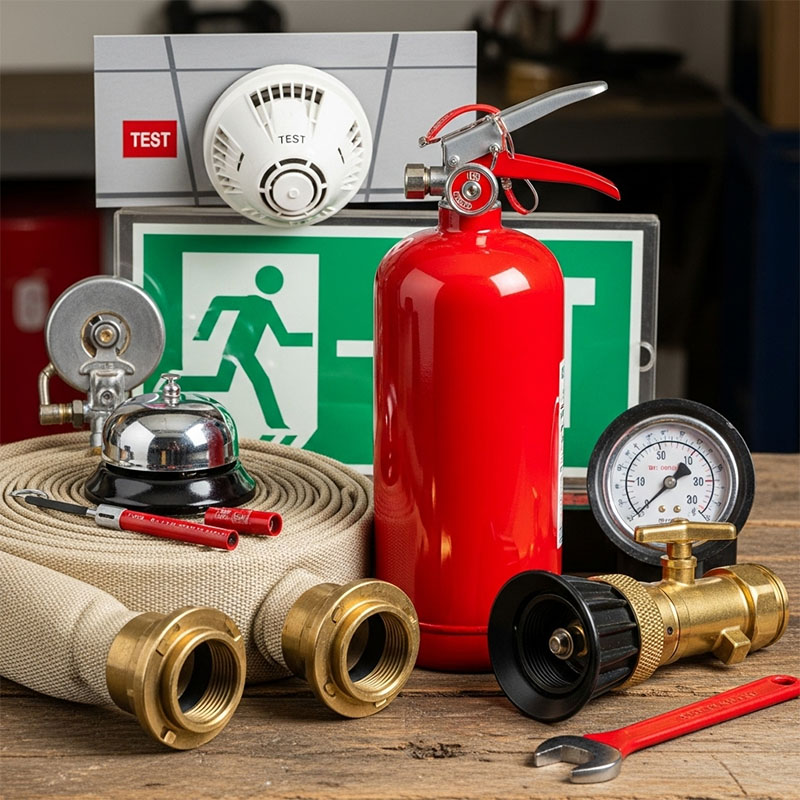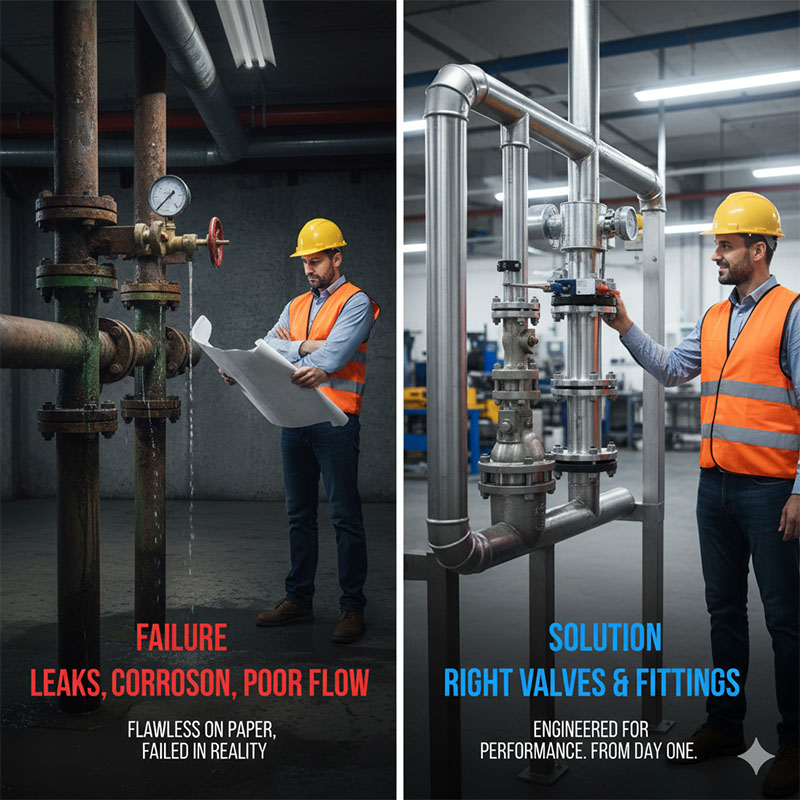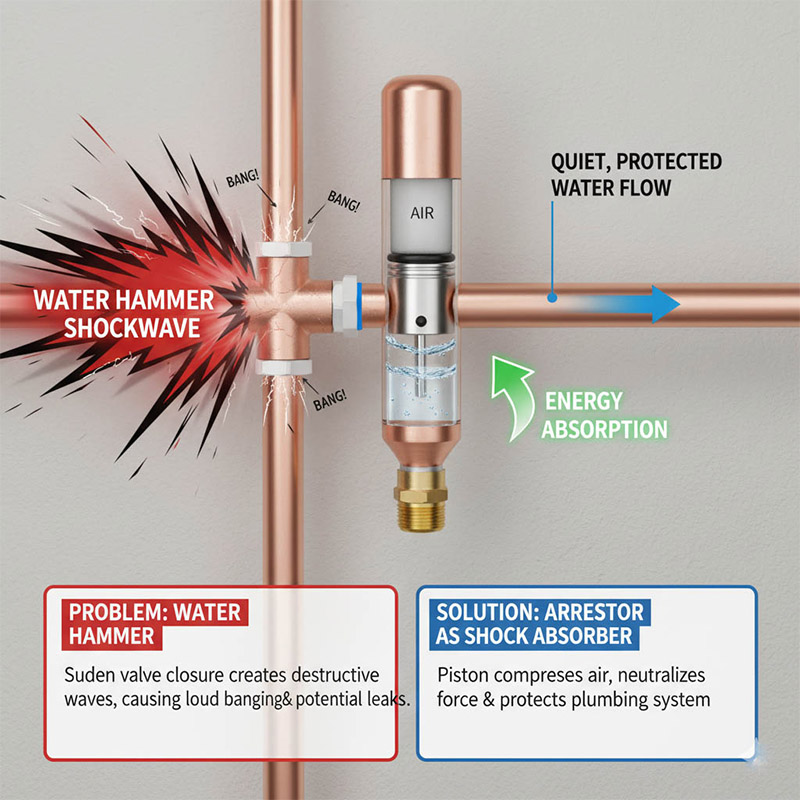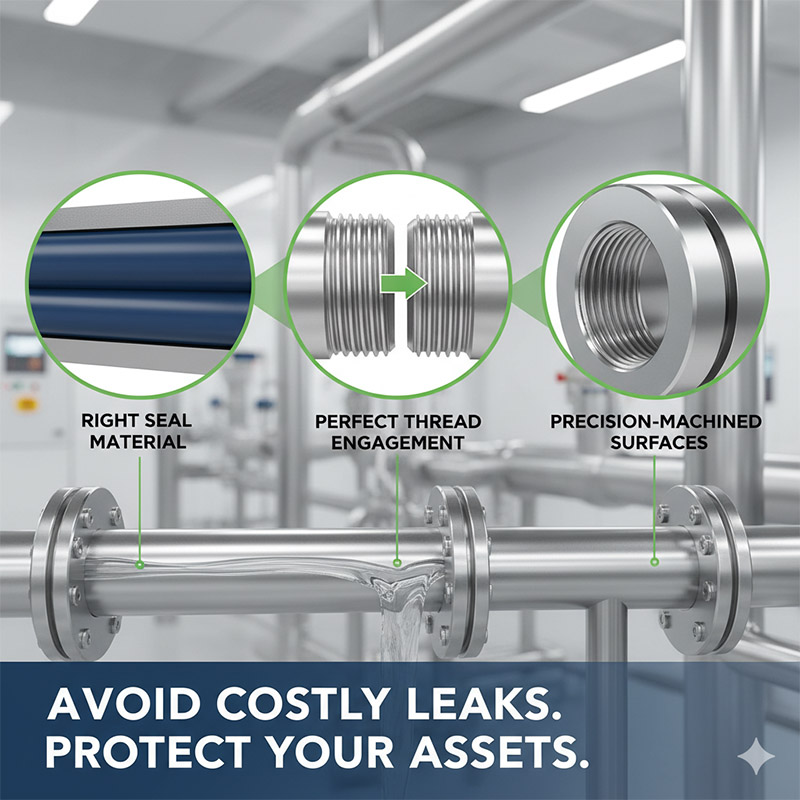How Does a Sight Glass Keep Big Systems from Failing?
Worried that a hidden problem is about to cause a catastrophic system failure? This uncertainty is stressful and expensive. A simple sight glass provides a direct window into your equipment's health.
A sight glass is a transparent, high-strength window installed into a machine or vessel. It allows you to visually inspect fluid levels, flow, and condition in real-time. This early warning system helps you spot problems like contamination or low levels before they cause major damage.
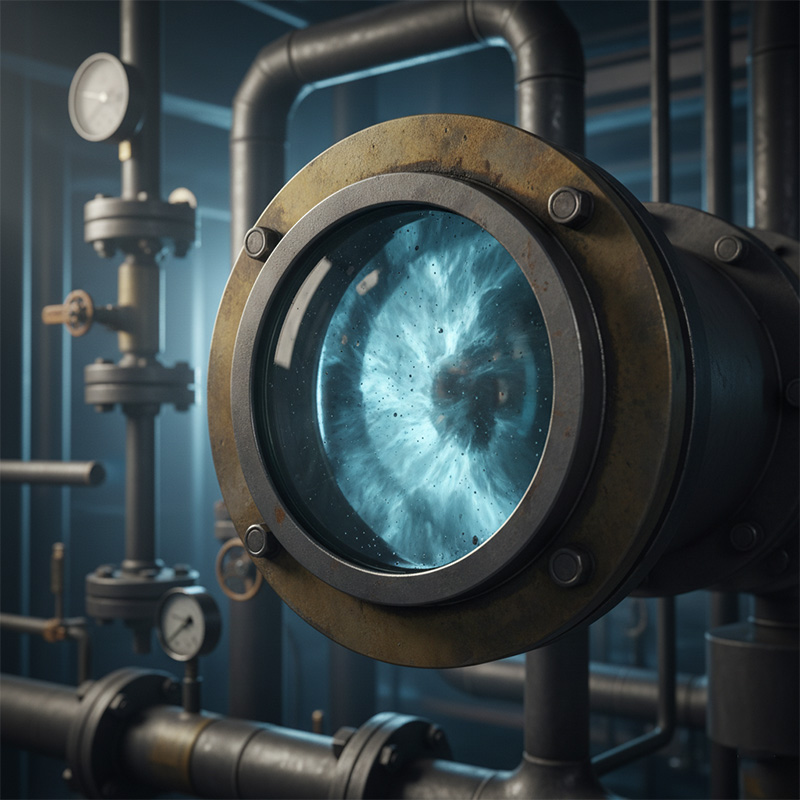
As someone who has built a business around precision manufacturing, I've learned that the smallest components often prevent the biggest disasters. A sight glass is a perfect example. It's a simple, passive part, but its role is incredibly active in preventing downtime. For a designer like you, Jacky, understanding the engineering behind these "windows" is key. The choices in material, seals, and placement can mean the difference between a reliable machine and a maintenance nightmare. Let's look closer at this vital component.
What is a sight glass actually used for?
Are you designing a system without knowing its internal state? Relying only on gauges is like flying blind. A simple visual check provides confidence that gauges alone cannot offer.
A sight glass is used for direct, real-time visual inspection inside a sealed system. Its core purposes are to confirm fluid levels, check for contaminants, monitor flow, and observe the condition of fluids like oil or refrigerant. It is a fundamental tool for diagnostics.
 A sight glass does more than just show a fluid level; it tells a story. I once visited a client whose hydraulic press kept overheating. The pressure and temperature gauges read normal, but the machine was sluggish. We looked at the sight glass on the reservoir, and the problem was immediately obvious: the oil was full of foam. Air was getting into the system through a bad suction line seal, aerating the oil. The gauges couldn't detect this, but the sight glass showed it instantly. For a designer like Jacky, this is a critical lesson. You need to provide operators with the tools to see what's really happening. Your role isn't just to design a functional system, but to design a system that is easy to monitor and maintain.
A sight glass does more than just show a fluid level; it tells a story. I once visited a client whose hydraulic press kept overheating. The pressure and temperature gauges read normal, but the machine was sluggish. We looked at the sight glass on the reservoir, and the problem was immediately obvious: the oil was full of foam. Air was getting into the system through a bad suction line seal, aerating the oil. The gauges couldn't detect this, but the sight glass showed it instantly. For a designer like Jacky, this is a critical lesson. You need to provide operators with the tools to see what's really happening. Your role isn't just to design a functional system, but to design a system that is easy to monitor and maintain.
Primary Functions Across Different Systems
| System Type | Primary Use of Sight Glass | What It Helps Prevent |
|---|---|---|
| Hydraulics | Check oil level, color, clarity, and look for foaming. | Pump cavitation, overheating, contamination. |
| HVAC/Refrigeration | Verify liquid refrigerant is present, check for bubbles. | Compressor damage, loss of efficiency. |
| Industrial Gearboxes | Confirm oil level and check for water or metal flecks. | Gear wear, bearing failure. |
| Steam Systems | Monitor boiler water level and check for moisture in steam traps. | Boiler failure, inefficient steam use. |
Is it site glass or sight glass?
Are you unsure of the correct term when writing specifications? Using the wrong word can cause confusion and make technical documents look unprofessional, leading to ordering the wrong parts.
The correct term is always "sight glass." The word "sight" refers to the act of seeing, which is its primary function. The word "site" refers to a location or place. Using the proper terminology is critical for clear communication in any engineering or design field.
 This might seem like a small detail, but in the world of manufacturing and design, precision in language is as important as precision in measurement. Early in my career, I saw a purchase order for a "-10 AN site fitting." The supplier was confused, and the order was delayed by a week while we clarified they meant a "side fitting." A similar mix-up between "sight" and "site" could easily lead to a vendor sending construction survey equipment instead of a machine component. As designers, we create the source documents that everyone else follows. Getting these basic terms right builds a foundation of clarity and professionalism that prevents costly errors down the line. It's a habit worth cultivating.
This might seem like a small detail, but in the world of manufacturing and design, precision in language is as important as precision in measurement. Early in my career, I saw a purchase order for a "-10 AN site fitting." The supplier was confused, and the order was delayed by a week while we clarified they meant a "side fitting." A similar mix-up between "sight" and "site" could easily lead to a vendor sending construction survey equipment instead of a machine component. As designers, we create the source documents that everyone else follows. Getting these basic terms right builds a foundation of clarity and professionalism that prevents costly errors down the line. It's a habit worth cultivating.
Understanding the Terminology
Clarity in technical language prevents errors.
| Term | Root Meaning | Example in a Sentence | Why It's Wrong for This Component |
|---|---|---|---|
| Sight | The faculty of seeing | "Check the oil level through the sight glass." | This is the correct term. |
| Site | A location or place | "The construction site is on the west side of town." | A sight glass is a component, not a location. |
Always use "sight glass" in your designs, part lists, and communications.
What does a sight glass indicate?
Is your system healthy, or is it about to fail? A glance through the sight glass can tell you, but ignoring the signs is like ignoring a check engine light.
A sight glass provides crucial diagnostic information. It indicates fluid level (high, low, or correct), fluid condition (color and clarity), and flow. Bubbles in the glass often point to low refrigerant or air in a hydraulic system, while cloudy oil can signal water contamination.
 Reading a sight glass is a fundamental skill. It’s not just about seeing if fluid is there; it's about interpreting what you see. For example, in a hydraulic reservoir, perfectly clear oil is great, but foamy oil is a major red flag indicating aeration, which can destroy a pump. In a refrigeration system, a stream of bubbles means the system is low on charge, which reduces efficiency and can damage the compressor. Dark, burnt-looking oil points to compressor overheating or a potential motor burnout. As a designer, your job is to place the sight glass where an operator can easily see these signs. You must also consider internal lighting or background contrast to make these subtle changes in the fluid obvious. A well-placed sight glass is useless if you can't properly see through it.
Reading a sight glass is a fundamental skill. It’s not just about seeing if fluid is there; it's about interpreting what you see. For example, in a hydraulic reservoir, perfectly clear oil is great, but foamy oil is a major red flag indicating aeration, which can destroy a pump. In a refrigeration system, a stream of bubbles means the system is low on charge, which reduces efficiency and can damage the compressor. Dark, burnt-looking oil points to compressor overheating or a potential motor burnout. As a designer, your job is to place the sight glass where an operator can easily see these signs. You must also consider internal lighting or background contrast to make these subtle changes in the fluid obvious. A well-placed sight glass is useless if you can't properly see through it.
Common Visual Indicators
Here’s a quick guide to what you might see and what it means.
| Visual Cue | Potential Problem | System Type | Action Required |
|---|---|---|---|
| Bubbles in liquid line | Low refrigerant charge or restrictions | HVAC/Refrigeration | Check for leaks, recharge system. |
| Cloudy or milky oil | Water contamination | Hydraulic/Lubrication | Change oil, find source of water ingress. |
| Foamy oil | Air entering the system (aeration) | Hydraulic | Check for suction line leaks, low oil level. |
| Dark or discolored oil | Overheating, oil breakdown, or contamination | Any oil system | Take an oil sample, change oil, investigate. |
How do you choose the right sight glass?
Worried about choosing a component that might fail? Selecting the wrong sight glass can lead to a dangerous leak, a shattered window, or chemical degradation, causing massive downtime and safety risks.
To choose the right sight glass, you must match it to the application's pressure, temperature, and chemical compatibility. These three factors will determine the required glass material, seal type, and body housing. Always consult the manufacturer's specifications.

When I was designing molds, material selection was everything. The wrong steel would fail under pressure. The same principle applies here. For a sight glass, the choice of glass is just the beginning. The seals are just as critical. A Viton™ seal might be perfect for petroleum oils but could fail with certain refrigerants. An EPDM seal is great for steam but terrible for mineral oil. As a designer, you are responsible for specifying every part of the assembly. You have to think about the entire operating environment. Will it be exposed to external impacts? Then you might specify a protective cage. Will it be in a corrosive environment? Then a stainless steel body is a better choice than brass or carbon steel. The decision process is a risk assessment.
Key Selection Criteria
| Parameter | Common Materials/Options | Considerations for a Designer (Jacky) |
|---|---|---|
| Pressure Rating | Fused glass, Borosilicate, Sapphire | Must exceed the system's Maximum Allowable Working Pressure (MAWP). |
| Temperature Range | Soda-lime (low), Borosilicate (mid), Quartz (high) | Material must be stable at both min and max operating temps. |
| Chemical Compatibility | Glass, Stainless Steel, Brass (Body); NBR, Viton™, EPDM (Seals) | The fluid must not corrode the body, cloud the glass, or degrade the seal. |
| Mechanical Stress | Annealed vs. Tempered Glass | Tempered glass is stronger and safer if external impacts are likely. |
Can a sight glass handle high pressure?
Afraid that the "window" is the weakest point in your design? It's a common concern that a piece of glass will fail under the immense pressures found in hydraulic or pressurized gas systems.
Yes, properly engineered sight glasses can handle extremely high pressures. High-pressure sight glasses use materials like borosilicate or sapphire glass fused directly to a metal housing. This design eliminates traditional seals and can safely withstand pressures exceeding thousands of PSI.
 The magic is in the manufacturing process. A fused sight glass isn't just a piece of glass clamped between two gaskets. Instead, the glass is heated to its melting point and molecularly bonded to the surrounding metal ring. As the metal and glass cool together, the metal housing compresses the glass. This pre-compression puts the glass under immense compressive stress. Since glass is incredibly strong in compression, it can now withstand very high internal pressures that create tensile stress. I find this fascinating from a design and materials science perspective. We use similar principles of pre-stressing in other applications, like with pre-stressed concrete. It's a brilliant way to leverage a material's inherent strengths to overcome its weaknesses. For Jacky, this means you can confidently specify a sight glass even in a high-pressure hydraulic manifold design, provided you choose the correct fused style.
The magic is in the manufacturing process. A fused sight glass isn't just a piece of glass clamped between two gaskets. Instead, the glass is heated to its melting point and molecularly bonded to the surrounding metal ring. As the metal and glass cool together, the metal housing compresses the glass. This pre-compression puts the glass under immense compressive stress. Since glass is incredibly strong in compression, it can now withstand very high internal pressures that create tensile stress. I find this fascinating from a design and materials science perspective. We use similar principles of pre-stressing in other applications, like with pre-stressed concrete. It's a brilliant way to leverage a material's inherent strengths to overcome its weaknesses. For Jacky, this means you can confidently specify a sight glass even in a high-pressure hydraulic manifold design, provided you choose the correct fused style.
Pressure Handling Capabilities
| Sight Glass Type | Typical Pressure Rating (PSI) | Construction Method | Common Applications |
|---|---|---|---|
| Mechanically Sealed | 0 - 500 PSI | Glass compressed between gaskets and a housing | Oil reservoirs, low-pressure tanks |
| Fused (Bonded) | 1,000 - 20,000+ PSI | Glass is melted and fused directly into a metal ring | Hydraulic systems, gas compressors, reactors |
| Sapphire (High-End Fused) | Up to 30,000+ PSI | Synthetic sapphire is brazed or fused into a body | Aerospace, deep-sea equipment, research |
Where should oil be on a sight glass?
Unsure if the oil level is correct? Filling to the wrong level—either too high or too low—can starve a machine of lubrication or cause other operational problems like foaming and overheating.
For most machinery, the correct oil level is at the center point of the sight glass when the machine is not running. Many sight glasses have a red dot or circle to indicate the optimal level. Always confirm the exact level in the equipment's service manual.
 The static (non-running) level is the standard reference point. However, it's also crucial to understand how the level changes during operation. In a compressor or gearbox, the oil level may drop slightly once it starts running as oil is distributed throughout the system. If the level drops out of sight, it’s too low. Conversely, if the sight glass is completely full when running, the oil has been overfilled. Overfilling is just as bad as underfilling. It can cause oil to foam, leading to poor lubrication, and increase drag on moving parts, which generates excess heat and wastes energy. As a designer, your placement of the sight glass is critical. It must be positioned to accurately reflect the sump's oil level at the correct static fill point, away from any turbulence that could give a false reading.
The static (non-running) level is the standard reference point. However, it's also crucial to understand how the level changes during operation. In a compressor or gearbox, the oil level may drop slightly once it starts running as oil is distributed throughout the system. If the level drops out of sight, it’s too low. Conversely, if the sight glass is completely full when running, the oil has been overfilled. Overfilling is just as bad as underfilling. It can cause oil to foam, leading to poor lubrication, and increase drag on moving parts, which generates excess heat and wastes energy. As a designer, your placement of the sight glass is critical. It must be positioned to accurately reflect the sump's oil level at the correct static fill point, away from any turbulence that could give a false reading.
Interpreting Oil Levels
| Level in Sight Glass (Static) | Status | Potential Risk |
|---|---|---|
| Above Centerline/Max Mark | Overfilled | Foaming, overheating, seal damage due to high pressure. |
| At Centerline/Mark | Correct | Optimal lubrication and performance. |
| Below Centerline/Min Mark | Underfilled | Component starvation, excessive wear, overheating. |
| Not Visible in Glass | Critically Low | Imminent catastrophic failure. Shutdown immediately. |
Conclusion
The sight glass is a simple yet vital window into your machinery's health. Understanding how to read, select, and specify the right one is key to ensuring long-term operational reliability.





